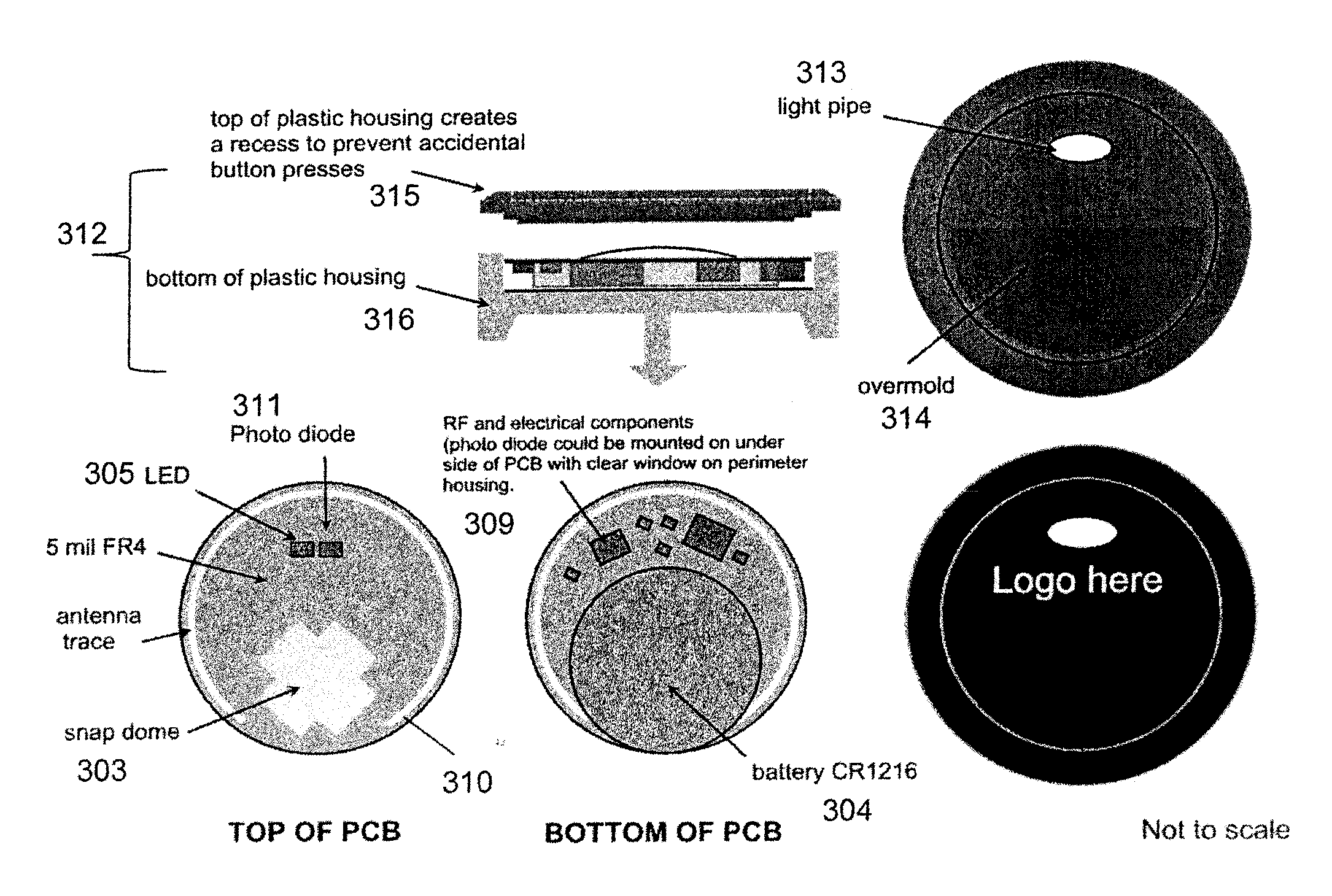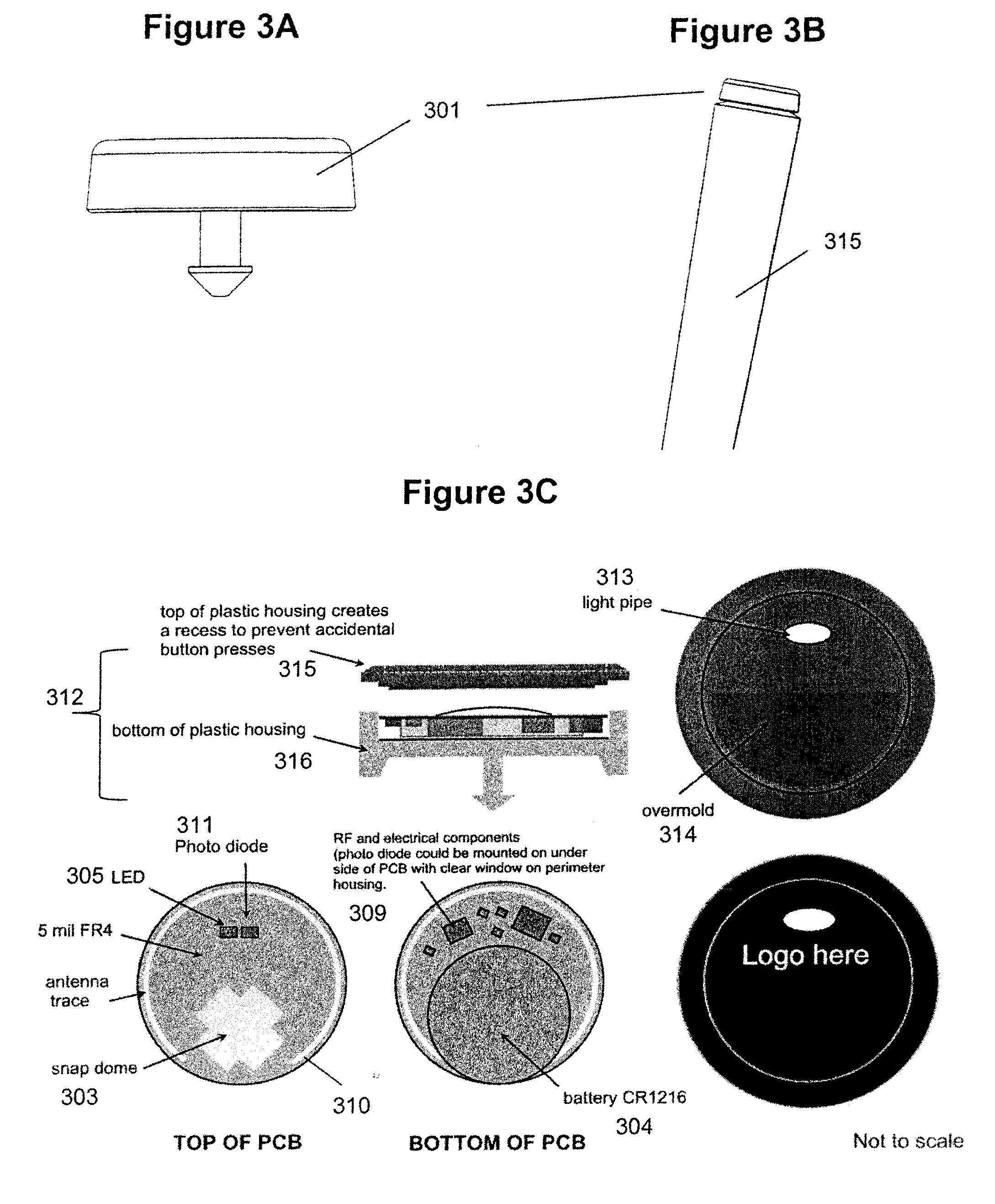Golf data recorder with integrated missing club reminder and theft prevention system
a golf data recorder and golf data technology, applied in the field of golf, can solve the problems of golfer forgetting to take action on every stroke, delay in the game, and inability to drive a golf car
- Summary
- Abstract
- Description
- Claims
- Application Information
AI Technical Summary
Benefits of technology
Problems solved by technology
Method used
Image
Examples
example 1
Twilight—Valid Transmission
[0131]Step 1) Light sensor switch detects a transition from dark to light (e.g. from 3 Lux to 6 Lux); [golf club has been removed from golf bag][0132]Step 2) Light meter takes a reading of 6 Lux and transmits “out of bag” and “6 Lux” to the receiving device;[0133]Step 3) The receiving device's on-board light meter also reads approximately “6 Lux”, or the receiving device has GPS and the time of day is during twilight hours;[0134]Step 4) The receiving device records the data as valid and begins tracking the club as being “out of the bag”.
example 2
Daylight (Bright Day) and Translucent Golf Bag—Invalid Transmission
[0135]Step 1) Light sensor switch detects a transition from dark to light (e.g. from 3 Lux to 6 Lux); [golf club is still in golf bag][0136]Step 2) Light meter takes a reading of 6 Lux and transmits “out of bag” and “6 Lux” to the receiving device;[0137]Step 3) The receiving device's on-board light meter reads approximately “70,000 Lux”, or the receiving device has GPS and the time of day is during daylight hours;[0138]Step 4) The receiving device interprets the data as invalid and does not record the “out of the bag” status.
In example 2 above it is possible that a reflection of light in the bag created the jump from 3 to 6 Lux, but the golf club never left the bag.
example 3
Daylight (Bright Day) and Translucent Golf Bag
[0139]Step 1) Light sensor switch detects a transition from dark to light (e.g. from 3 Lux to 70,000 Lux); [golf club has been removed from golf bag][0140]Step 2) Light meter takes a reading of approximately 70,000 Lux and transmits “out of bag” and “70,000 Lux” to the receiving device;[0141]Step 3) The receiving device's on-board light meter reads approximately “70,000 Lux”, or the receiving device has GPS and the time of day is during daylight hours;[0142]Step 4) The receiving device interprets the data as valid and begins tracking the club as being “out of the bag”;[0143]Step 5) The club is returned to the bag;[0144]Step 6) The light meter reads 12 Lux (a significantly lower light level than 70,000 Lux) and the light switch does not sense a transition from light to dark (because the light level is above 3 Lux)[0145]Step 7) Because the receiving device was configured with “translucent bag” the device could either report that the club i...
PUM
 Login to View More
Login to View More Abstract
Description
Claims
Application Information
 Login to View More
Login to View More - R&D
- Intellectual Property
- Life Sciences
- Materials
- Tech Scout
- Unparalleled Data Quality
- Higher Quality Content
- 60% Fewer Hallucinations
Browse by: Latest US Patents, China's latest patents, Technical Efficacy Thesaurus, Application Domain, Technology Topic, Popular Technical Reports.
© 2025 PatSnap. All rights reserved.Legal|Privacy policy|Modern Slavery Act Transparency Statement|Sitemap|About US| Contact US: help@patsnap.com



